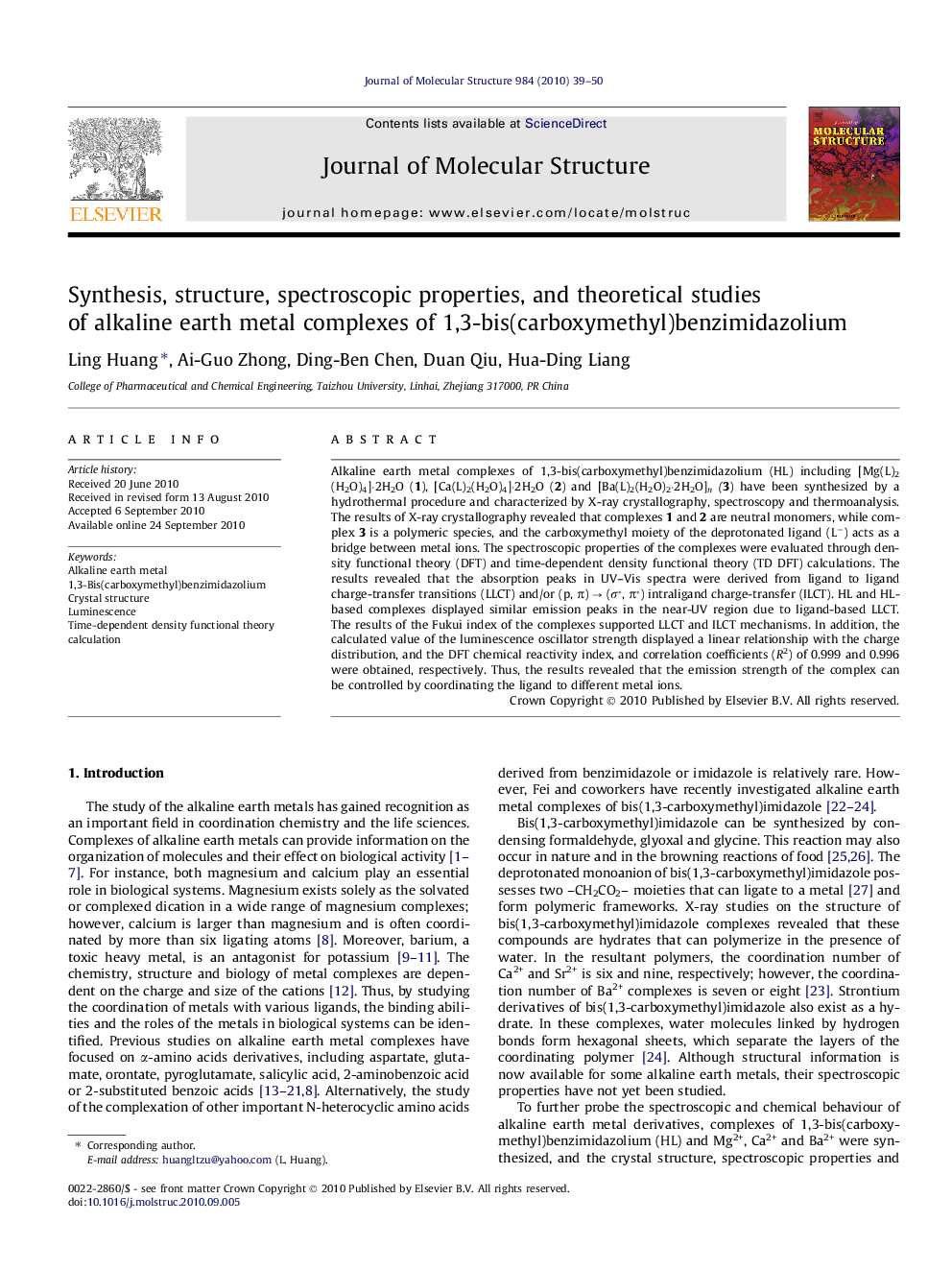| Article ID | Journal | Published Year | Pages | File Type |
|---|---|---|---|---|
| 1406428 | Journal of Molecular Structure | 2010 | 12 Pages |
Abstract
Alkaline earth metal complexes of 1,3-bis(carboxymethyl)benzimidazolium (HL) including [Mg(L)2(H2O)4]·2H2O (1), [Ca(L)2(H2O)4]·2H2O (2) and [Ba(L)2(H2O)2·2H2O]n (3) have been synthesized by a hydrothermal procedure and characterized by X-ray crystallography, spectroscopy and thermoanalysis. The results of X-ray crystallography revealed that complexes 1 and 2 are neutral monomers, while complex 3 is a polymeric species, and the carboxymethyl moiety of the deprotonated ligand (Lâ) acts as a bridge between metal ions. The spectroscopic properties of the complexes were evaluated through density functional theory (DFT) and time-dependent density functional theory (TD DFT) calculations. The results revealed that the absorption peaks in UV-Vis spectra were derived from ligand to ligand charge-transfer transitions (LLCT) and/or (p, Ï) â (Ïâ, Ïâ) intraligand charge-transfer (ILCT). HL and HL-based complexes displayed similar emission peaks in the near-UV region due to ligand-based LLCT. The results of the Fukui index of the complexes supported LLCT and ILCT mechanisms. In addition, the calculated value of the luminescence oscillator strength displayed a linear relationship with the charge distribution, and the DFT chemical reactivity index, and correlation coefficients (R2) of 0.999 and 0.996 were obtained, respectively. Thus, the results revealed that the emission strength of the complex can be controlled by coordinating the ligand to different metal ions.
Keywords
Related Topics
Physical Sciences and Engineering
Chemistry
Organic Chemistry
Authors
Ling Huang, Ai-Guo Zhong, Ding-Ben Chen, Duan Qiu, Hua-Ding Liang,
